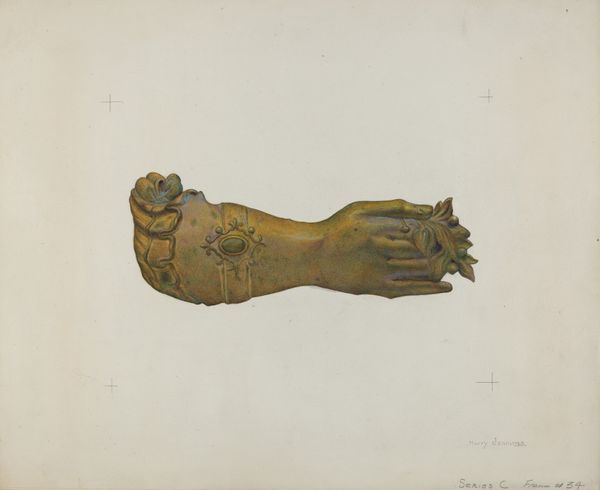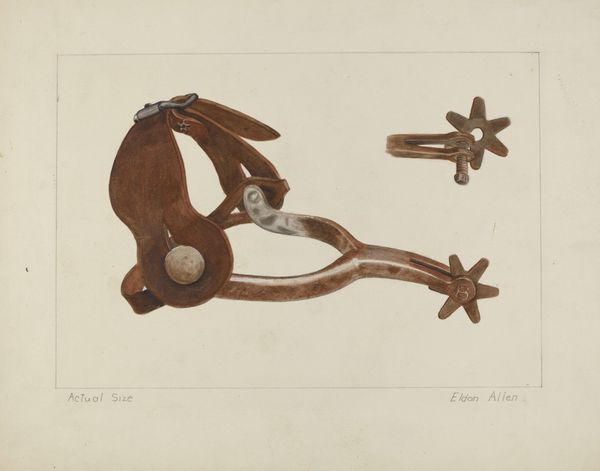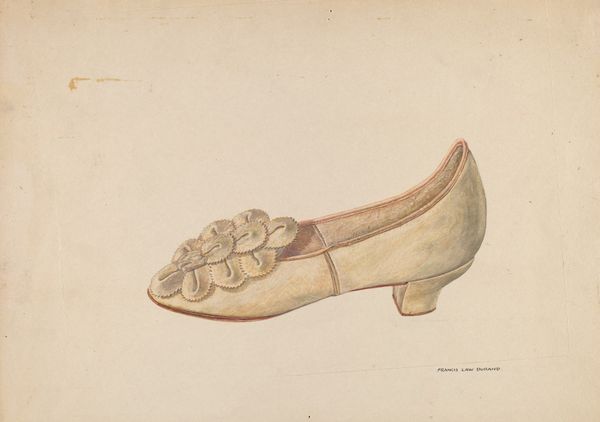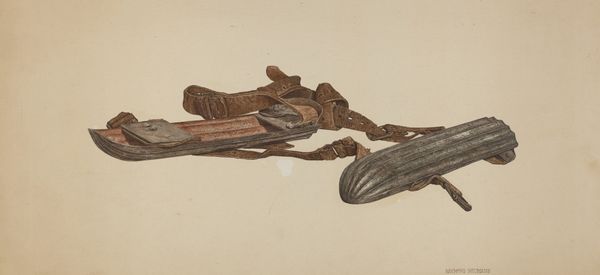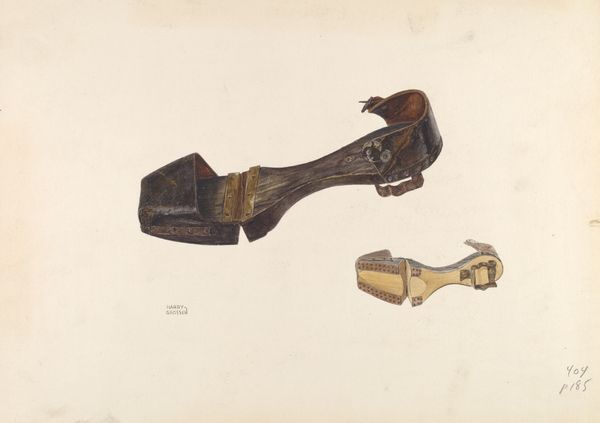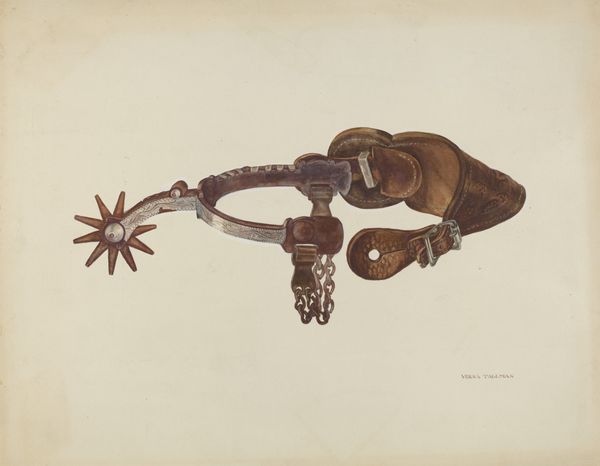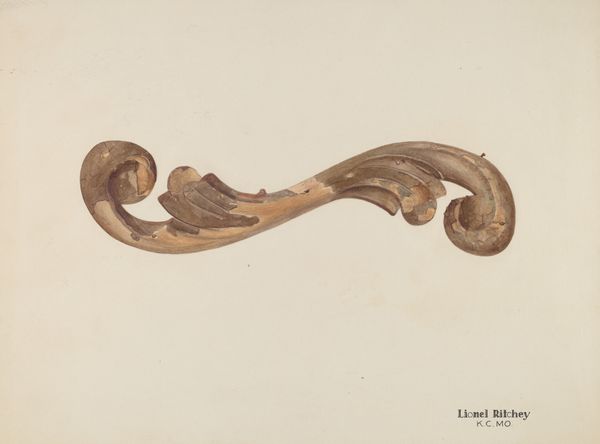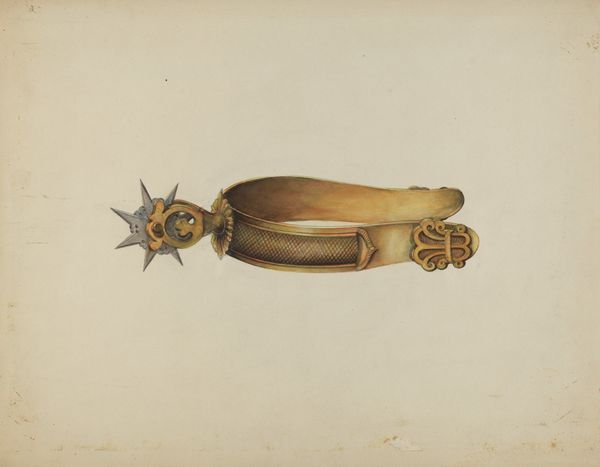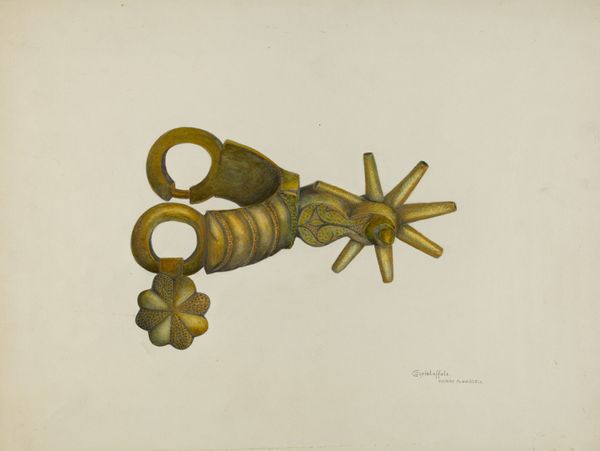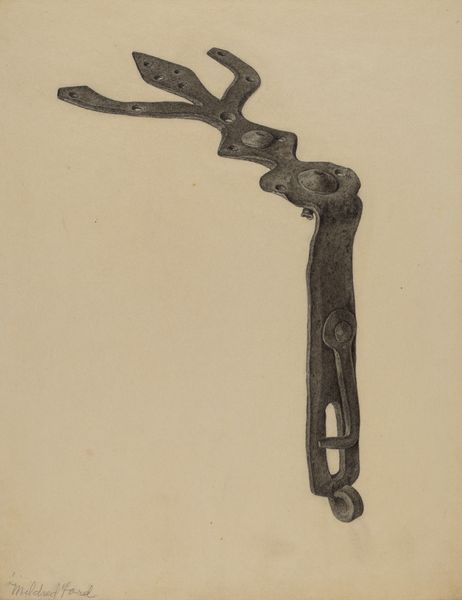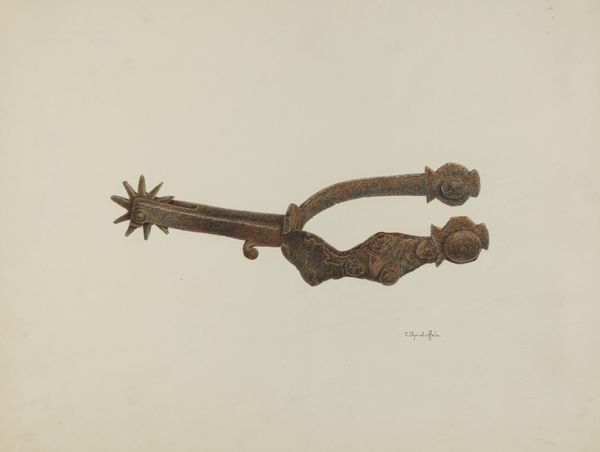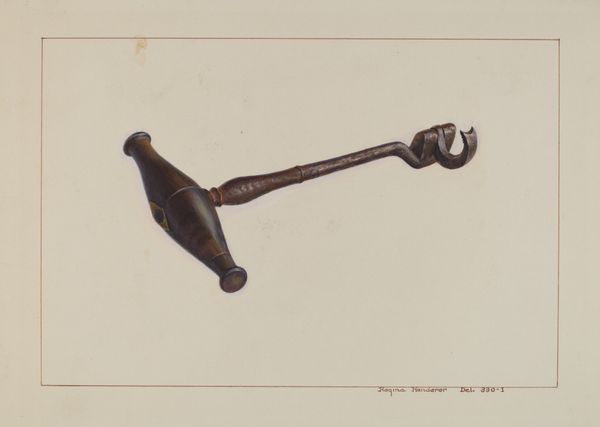
drawing, watercolor, pencil
#
drawing
#
charcoal drawing
#
oil painting
#
watercolor
#
pastel chalk drawing
#
pencil
#
watercolour illustration
#
decorative-art
#
watercolor
Dimensions: overall: 19.3 x 25.5 cm (7 5/8 x 10 1/16 in.) Original IAD Object: 2 3/4" wide; 7" long
Copyright: National Gallery of Art: CC0 1.0
Editor: This is Harry Jennings' "Tie-back," created around 1938. It looks like it's done with watercolor and maybe some pencil or pastel? It depicts a very ornate, almost theatrical tie-back fixture. It’s so detailed! What's your take on this piece? Curator: The context here is fascinating. Jennings was working during a period when design heavily influenced by historical styles was still quite prevalent, particularly in decorative arts. But this isn't mere imitation. We need to consider what public spaces, homes, and theaters, and ultimately, what power structures and tastes, might have desired or necessitated such an opulent object. Editor: So, the function of the object, its tie-back purpose, and the culture that produced it, really shape how we view the piece itself? Curator: Precisely! How does the artist’s technique – that intense detailing, the warm color palette – enhance or challenge ideas about beauty and functionality? A simple tie-back, elevated to an almost sculptural presence… Why? What kind of message is this extravagance meant to convey? Was this aspirational or more commonplace? Editor: It’s true, there’s a real emphasis on making even the functional beautiful and maybe a bit imposing. Are there certain types of public spaces it may have been intended for? Curator: Perhaps theaters or hotels aiming for a sense of grandeur? These venues actively cultivated experiences steeped in luxury, carefully calibrating impressions to affect power relations. Considering this in turn influences how we examine the art. Editor: That's a side of art interpretation I don't usually consider. It helps to see it as more than just a pretty image, and think about its role in society. Curator: Exactly! By considering its social and political implications, the work becomes an engaging tool for understanding cultural taste during the 1930s. Editor: This has totally opened my eyes to a whole new perspective on this lovely drawing, and really the social potential of decoration.
Comments
No comments
Be the first to comment and join the conversation on the ultimate creative platform.
